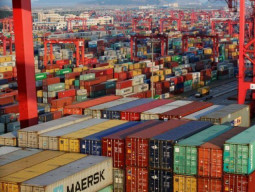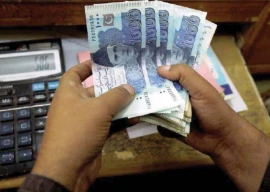
A few years ago, when I was teaching Institutional Economics to graduate students at Beaconhouse National University, we analysed the dynamics of the ongoing war with the Taliban using the North et.al model (2009). We postulated that when a specialist of violence, who controls the system of power and rent appropriation is engaged in combat with a new specialist of violence seeking takeover, a point can be reached where negotiations begin. This is a situation in which each combatant believes the other has recognised that peace, whereby there is rent-sharing between the two protagonists, gives greater economic gains than continued conflict. On the basis of this analysis, we predicted that the US and its ostensible allies, Pakistan and Afghanistan, would enter into peace negotiations with the Taliban sooner or later.
A clear-cut victory was unlikely because of the constraints operating on the US, Afghanistan and Pakistan on the one hand, and the nature of this war on the other. The US would not be able to bear for long the heavy cost in soldiers’ lives and hundreds of billions of dollars. The Afghan government, despite Nato help, would not be able to field an army of sufficient size, skill and motivation to win the war on its own. In Pakistan, the Taliban, following the classic principles of guerilla warfare, were giving up space to win time. They used this time for political mobilisation in Pakistan to capture significant sections of the ideological space in public discourse, the media, political parties and the very security apparatus through which the Taliban violence was to be managed. The Taliban position was further strengthened by the fact that elements within the security apparatus, who had earlier nurtured certain Taliban groups as strategic assets, continued to allegedly maintain links and even sympathise with them. Consequently, it became increasingly difficult to build a political consensus to make war on the Taliban. This lack of will to fight the Taliban persisted even though they were launching deadly attacks in the country. The problem of a determined prosecution of war against the Taliban was further compounded by the fact that the military faced significant resource constraints in terms of manpower, weaponry and finance, given that they felt it necessary to maintain deployment on the eastern front while conducting low intensity operations on the western front. The financial constraint became acute as the US, suspecting a ‘double game’, became tight-fisted and Pakistan’s government, with the economy in recession, faced a financial crisis. Thus, the predicted outcome occurred: negotiations.
The New Growth Framework formulated under the able leadership of Dr Nadeemul Haque specifies an admirable agenda of institutional change aimed at creating the competitive environment and the necessary incentives for productivity increase to place Pakistan on a private sector-led path of sustained growth. However, it is based on the neoclassical assumption that growth will occur when profitable opportunities present themselves unless there are governmental impediments that distort markets. This assumption is fundamentally flawed, not only because of the fact that it ignores the question of equity but also the problem of violence that recent research shows is the central problem of development. In Pakistan, there is widespread violence that restricts the writ of the state, undermines contracts and constrains transactions, all of which are essential for growth. Therefore the control of violence is a necessary condition for sustained growth to occur. This has become particularly important now with the prospect of an unprecedented windfall gain for the economy in the form of the $45 billion foreign investment contract signed last week between a UAE investment group and a Pakistani real estate tycoon.
Published in The Express Tribune, February 18th, 2013.
COMMENTS (4)
Comments are moderated and generally will be posted if they are on-topic and not abusive.
For more information, please see our Comments FAQ












































Mr Hussain, what you forget is that there can be no peace without justice. Implement social justice, then peace will come, and then everyone can benefit from development. Why is that so hard for Pakistani elite to understand?
@ Observer It needs political will, support of the people, latest intelligence acquisition technology, advance weaponry, resolve by the nation, consensus among masses and legal protection instead of split mindset of the policy makers and politicized opinion on media about war against terrorists. 10,000 men face to face can't withstand organized armies but cleansing of even fewer hidden in population with their sympathizers in media, judiciary and politics are difficult to eliminate so quickly. War in Iraq, Afghanistan, Vietnam and insurgency by the IRA are case in point.
"The problem of a determined prosecution of war against the Taliban was further compounded by the fact that the military faced significant resource constraints in terms of manpower, weaponry and finance, given that they felt it necessary to maintain deployment on the eastern front while conducting low intensity operations on the western front."
How much resources, manpower, weaponry and finance is needed to combat five to ten thousand militants armed with AK-47 who were concentrated in the small KP-FATA area?
forget development.